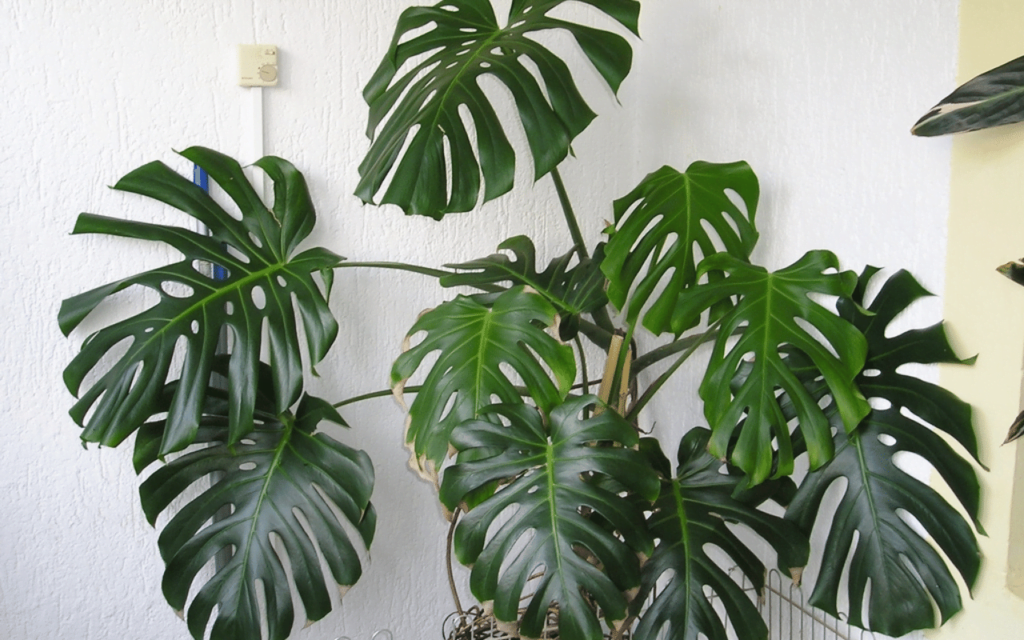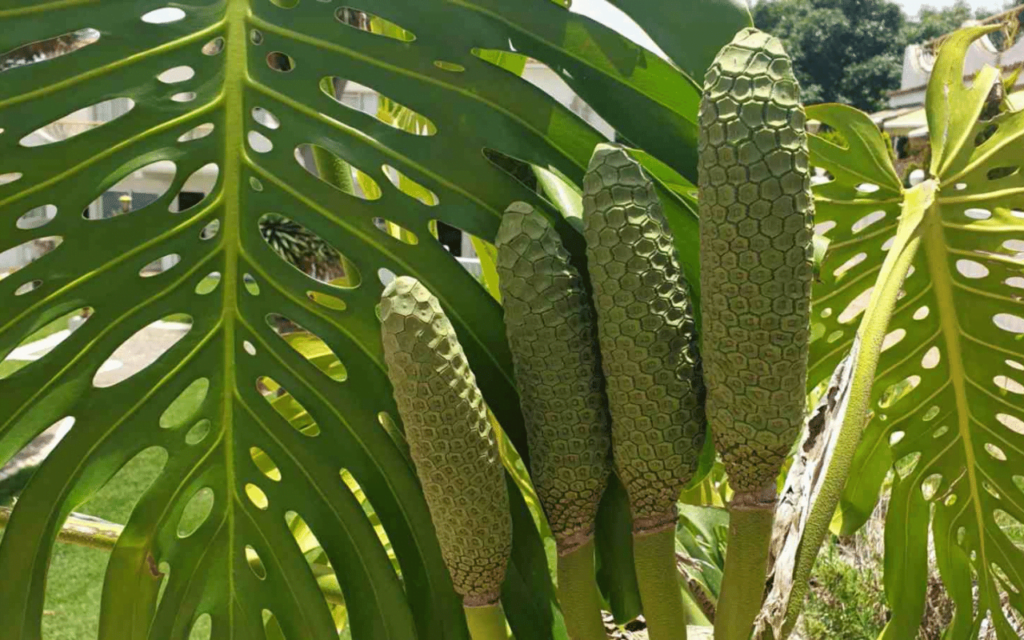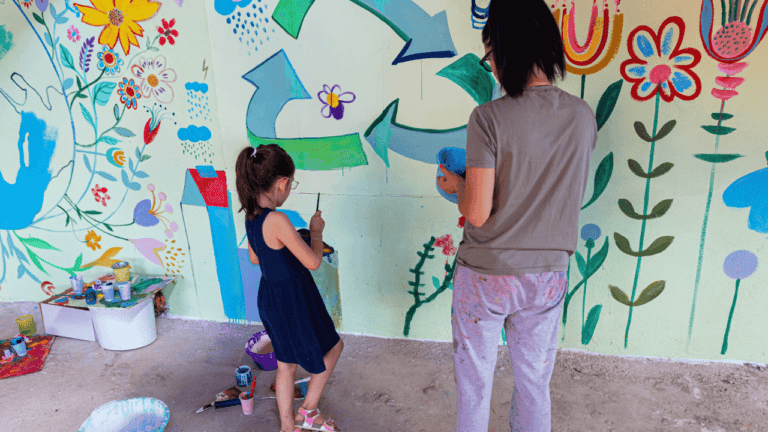Sure, let’s create a detailed two-column table for the Large Monstera Deliciosa
| Specification | Details |
|---|---|
| Common Names | Swiss Cheese Plant, Split-Leaf Philodendron, Monstera |
| Botanical Name | Monstera Deliciosa |
| Family | Araceae |
| Plant Type | Evergreen perennial |
| Mature Size | Up to 8-10 feet indoors; can be larger in natural habitat |
| Sun Exposure | Bright, indirect light |
| Soil Type | Well-draining potting mix |
| Soil pH | 5.5 – 7.5 (slightly acidic to neutral) |
| Bloom Time | Rarely blooms indoors; in its natural habitat, it blooms during the rainy season |
| Flower Color | White (spathe) with a spadix in the center; however, it’s rare to see blooms indoors |
| Hardiness Zones | 10-12 (USDA zones) |
| Native Area | Tropical forests of Central and South America |
This table provides a concise yet detailed overview of the Monstera Deliciosa’s key specifications. Keep in mind that while some characteristics, like “Mature Size” and “Bloom Time”, may vary based on individual care and environment, the given details serve as general guidelines.
Introduction to Monstera Deliciosa
Monstera Deliciosa, often referred to as the “Swiss Cheese Plant” due to its unique fenestrated leaves, is an indoor favorite among plant enthusiasts. Originating from the tropical forests of Central America, this plant has made its way into many homes, bringing with it a touch of exotic charm. In this review, we’ll delve into everything you need to know about caring for your Monstera, from its lighting needs to common pests.
Large Monstera Deliciosa Care
When it comes to caring for your Monstera, understanding its native habitat can offer insightful clues. The lush, humid rainforests of Central America provide a clear indication of the environment this plant thrives in.
Light
While Monstera can tolerate a range of lighting conditions, it primarily loves indirect bright light. Direct sunlight can scorch its leaves, leaving behind unsightly brown spots. Hence, it’s advised to place your Monstera in a spot where it receives filtered light. North or east-facing windows can be ideal. Moreover, rotating the plant occasionally ensures uniform growth.
Soil
Monstera Deliciosa prefers well-draining soil. A mix of regular potting soil with some perlite or sand can do wonders. This combination ensures that the roots receive the right amount of moisture without the risk of rot. Additionally, ensure your pot has proper drainage holes.
Water
This plant prefers to dry out a bit between waterings. A common rule is to water it once the top 1-2 inches of soil feels dry. Overwatering can lead to root rot, a problem many indoor plants face. Therefore, always ensure to check the soil’s moisture level before drenching it.
Temperature and Humidity
Being a tropical plant, Monstera thrives in temperatures between 65-80°F. Avoid placing it in areas with sudden temperature drops. Humidity plays a crucial role, and the plant will appreciate if you can maintain indoor humidity levels above 50%. Misting the plant or using a humidifier can be beneficial.
Fertilizer
Feed your Monstera with a balanced liquid fertilizer every 2-4 weeks during the growing season (spring and summer). During the dormant winter months, you can reduce this frequency.
Types of Monstera Deliciosa Plant
While the classic Monstera Deliciosa is widely recognized, there are several varieties, like the Monstera Deliciosa Variegata, which boasts beautiful white variegated leaves.
Pruning
Pruning not only maintains the Monstera’s shape but also encourages new growth. Remove yellow or damaged leaves at the base to keep the plant looking fresh and vibrant.
Propagating Monstera Deliciosa Plants
One of the joys of Monstera ownership is its ease of propagation. By simply cutting a stem below a node and placing it in water, you can watch roots form over a few weeks.
Overwintering
During winter, Monstera’s growth slows down. Reduce watering and avoid repotting during these colder months. Ensure the plant is away from cold drafts or sudden temperature changes.
Common Pests & Plant Diseases
Like many indoor plants, Monstera can be susceptible to pests like spider mites, aphids, and mealybugs. Regularly check the undersides of leaves. Neem oil can be a great organic solution to combat these pests.
How to Get Spider Plant to Bloom
While this section seems misplaced in a Monstera review, it’s crucial to note that the Spider Plant, or Chlorophytum comosum, is another popular houseplant. For blooming, it requires bright indirect light and a balanced fertilizer during its growth phase.
Common Problems With Monstera Deliciosa Plant
Concise list of common problems faced by Monstera Deliciosa owners:
- Yellow Leaves: Overwatering is a common cause, but it can also indicate too much direct sunlight.
- Brown Spots: This can be due to underwatering, overwatering, or sunburn if exposed to direct sunlight for prolonged periods.
- Drooping Leaves: Often a sign of underwatering or root rot due to overwatering.
- Lack of Fenestration (Holes in Leaves): Insufficient light or the plant being too young can be reasons. Typically, younger Monstera leaves are solid, and the distinctive fenestrations appear as the plant matures.
- Leggy Growth: This happens when the plant is reaching for light, indicating that it might not be getting enough.
- Pests: Common pests include spider mites, scale, thrips, and mealybugs.
- Stunted Growth: Can be due to a lack of nutrients or being pot-bound. It might need repotting or fertilization.
- Leaf Curling: Often a sign of underwatering, but can also be an indication of pests or over-fertilization.
- Mold on Soil Surface: This is typically due to overwatering and poor ventilation.
Remember, while Monstera Deliciosa is relatively hardy, it’s essential to keep an eye out for these signs and address issues promptly for a healthy, thriving plant.
Quickly Declining
If your Monstera shows signs of rapid decline, assess its care routine. Overwatering, insufficient light, or pest infestations can be culprits. Always ensure to follow care guidelines closely.
A Fresh Perspective: Ending Notes
Owning a Monstera Deliciosa is more than just having a plant. It’s about bringing a piece of the tropical rainforest into your home. With the right care, this plant can thrive, offering lush, green beauty for years to come.
Frequently Asked Questions
Decode the magic of gardens with our guide to Landscaping Styles Frequently Asked Questions.
- Typically, every 1-2 years or when the plant outgrows its current pot.
- Yes, it can be harmful if ingested. Always place it out of reach of pets and children.
- Yes, it can be harmful if ingested. Always place it out of reach of pets and children.
- Using a moss pole or any other type of support can help as Monstera grows larger and begins to vine.
Recent Posts
- Modern Mural Ideas Transforming Walls into Artworks
- Thematic Table Decor Dressing Your Table for Special Occasions
- Festive Lighting Ideas Brightening Your Home for the Holidays
- Biodegradable Decor Materials Choosing Earth-Friendly Options
- Personalized Space Decor Making Your Home Uniquely Yours
- New Year’s Eve Decor Ringing in the New Year in Style
- Transforming Junk into Decor Upcycling at Its Best
- Second-Life Decor Objects Giving Old Items New Purpose
- Unique Decoration Crafting Standout Ideas for Your Home
- Environmentally Friendly Styling Decor with a Conscience











